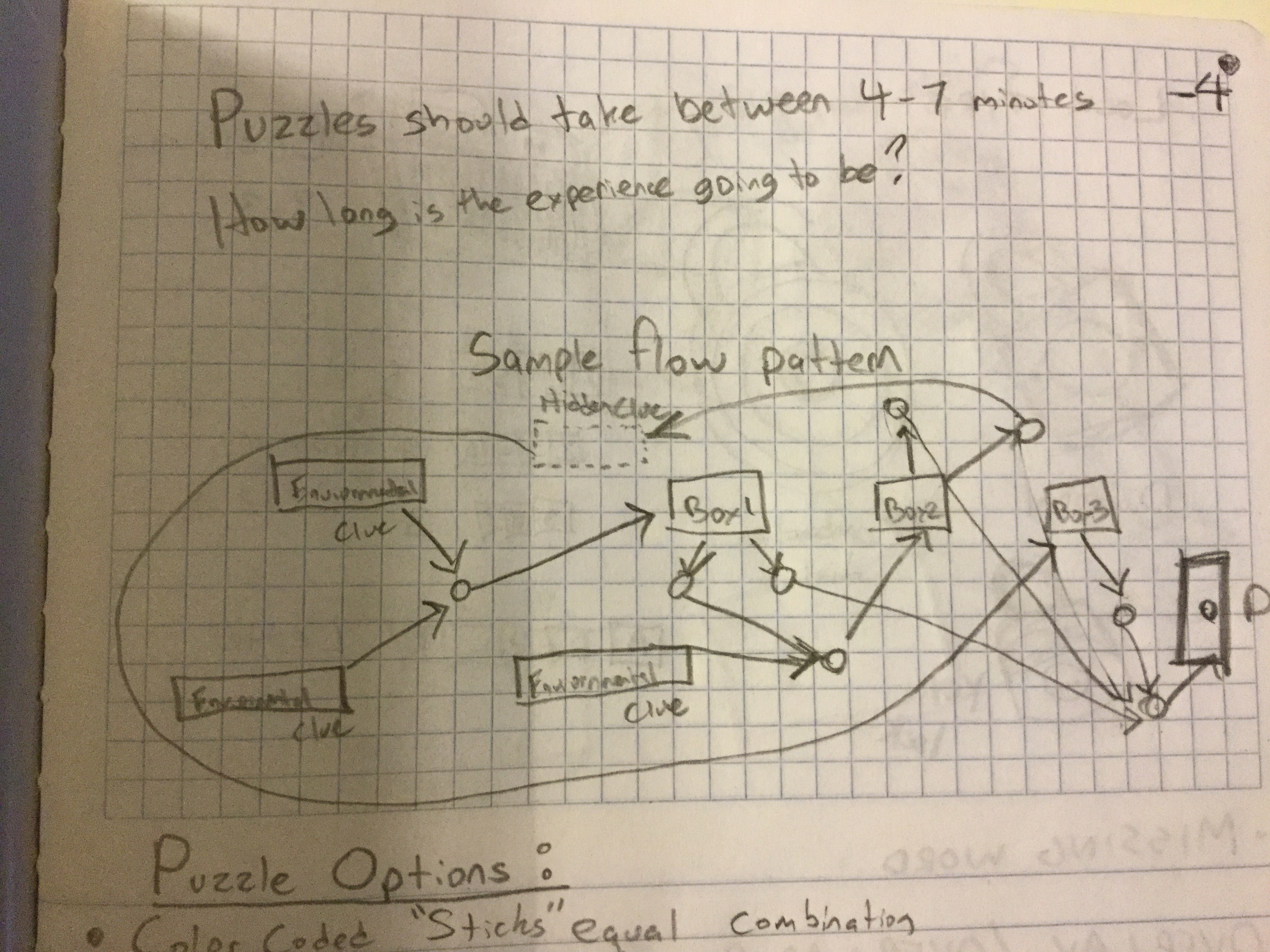
Blog 2: Unfortunately I have not been able to keep up with my blog posting to the degree that I would like. However, I would like to continue the analysis of the work and my thought processes as I move through this project. At the time of the writing of this post and the next 2, I have completed my first escape room and will be collecting data through testing on you on students during the maker take over on April 25, 2018 and the Burlington maker fair on Saturday, April 28, 2018.
As I stated in my previous blog post, The central problem that I have in developing this escape room is that I need a way to add curriculum focus into these puzzles that will both allow for the focus to be modified to suit the needs of the teacher and their curriculum and also make sure that the puzzles are not a glorified worksheet where the student will check their work by opening up a lock. After having a discussion with my peer group, colleagues, and mentors for this project, I’ve made the decision to relax the hard curricular focus on these puzzles, and focus on creating challenging puzzles that will help the students that do them foster critical thinking skills as well as establish a group dynamics building experience.
Moving into the Prototyping class as provided by the KickBox that Elon sponsors (which allowed me the resources to complete this project), I truly have no idea what it is that I’m going to be building and designing. Our coordinator, Dan, showed us the value of very cheap prototyping Using paper or cardboard allowed us to see flaws in a design before committing time and resources into barking up the wrong tree. This was valuable as it gave me a good opportunity to figure out the source of puzzles that I would need to use and it gave me a little bit of data from my fellow KickBoxers about the best way to proceed with certain puzzles. By the end of the class I had decided on a design flow for my escape room. This flow would allow for elements of puzzles to be discovered progressively and would not be able to be completed until the participant had gotten to be final puzzle. They would have to use clue elements that they did not understand, that they found in the previous puzzles, to solve the final puzzle.
From this point the challenge that lay ahead of me was deciding on what puzzles I would like to use and to figure out the flow from one to the next.
 Chuck Buckley
Chuck Buckley
Discussions
Become a Hackaday.io Member
Create an account to leave a comment. Already have an account? Log In.